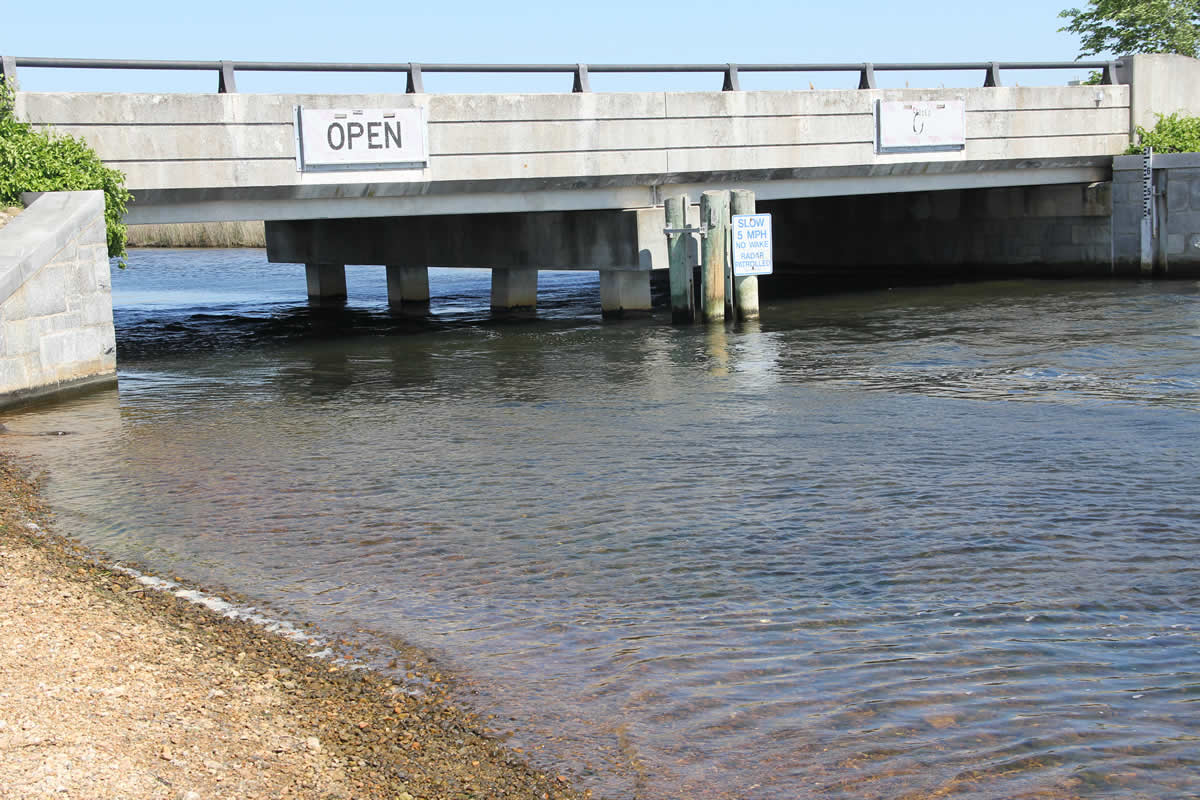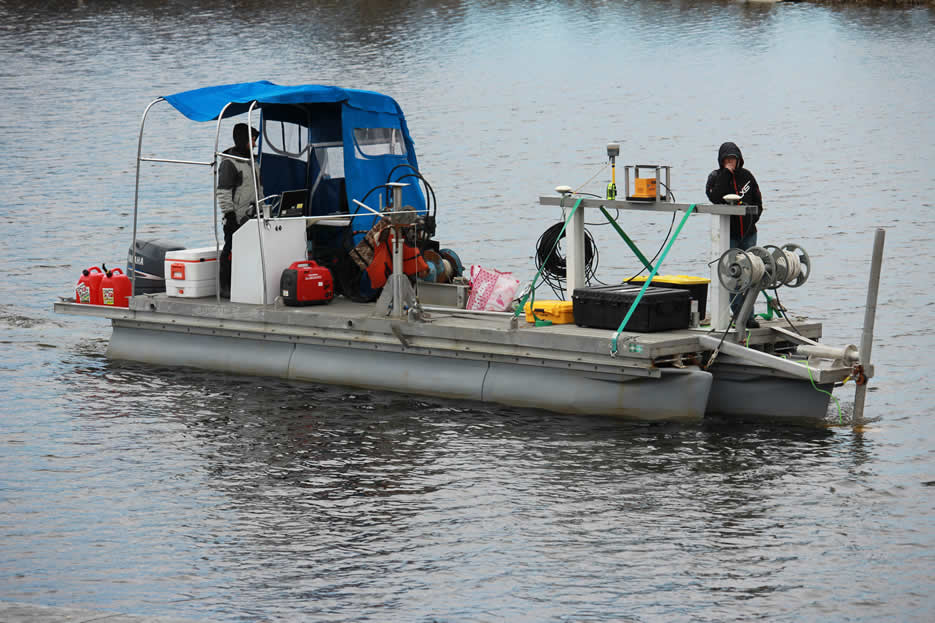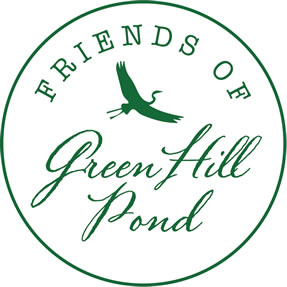Deepen the Existing Channel between Ninigret and Green Hill Pond

The Inlet Under the Creek Bridge is the Only Connection Between Green Hill Pond and Ninigret
Tidal flow in Green Hill Pond is constrained by a narrow bridge, heavy shoaling, very shallow water, and a distant connection to the ocean through Ninigret pond. Our idea to solve this problem was simple: Deepen the existing channel through dredging to optimize the connection with Ninigret, thereby improving the tidal flushing of Green Hill Pond without the added complications and risk of a direct ocean connection. In 2017, FGHP was able to secure a state grant of $25,000 to enable the University of Rhode Island (URI) to assess the feasibility of this idea.
To do their assessment, URI mapped the depth contours of Green Hill Pond for the first time using their specially equipped research boat.

The resulting contour map can be found here. In December 2018, URI issued its report which can be found here. URI found that dredging the channel would substantially increase the tidal range in Green Hill Pond from 11 cm to 16 cm (a 45% increase). At the same time, the tidal range in Ninigret would decrease slightly from 20 to 18 cm. The simulations show that dredging has no impact on the exchange of water between Ninigret and the ocean. Bacteria reduction depends upon the volume of water exchanged. Given the small absolute value of the tidal change between Ninigret and Green Hill, the fact is that dredging will not exchange much more water than the current situation. The net result is that there would be only a slight reduction (8%) in bacteria levels as a result of dredging the channel connecting the two ponds. Put differently, there just isn’t enough difference in the tidal ranges between Ninigret and Green Hill Pond to be able to drive a substantial reduction in bacteria levels through dredging. FGHP validated this overall conclusion with Woods Hole Group.
Given a potential price tag of over $1 million and the relatively small impact, FGHP concluded that this project did not merit further work—at least not at this time. That said, the inlet between the two ponds continues to slowly silt up which will gradually choke off tidal flushing. So, at some point in the future, dredging the channel may not be optional.
To increase the benefits of dredging the channel and potentially open up new funding sources, FGHP proposed to use sand sourced the heavily shoaled area next to the bridge to restore the dunes on Green Hill Beach that were flattened after Superstorm Sandy. In November 2020, URI and FGHP obtained a matching grant from the National Coastal Resilience Fund to pursue this idea which we hoped would both improve tidal exchange and protect the coast.

In the report, URI concluded that the dunes could be strengthened to provide better protection for the communities around Green Hill Pond and that sand could likely be sourced from the Pond. However, after surveying the dunes by LIDAR, URI found that the benefits would be more modest than expected given the degree of natural dune recovery that has happened in the decade since Sandy hit in 2012. On the other side of the ledger, the challenges to obtain permits would be much greater than expected. Among many other issues, owner consents in particular looked especially challenging given the fragmented private ownership of the land. Finally, the price tag of this project looked to be well over $1 million. At this point, it is up to the state and town to decide whether to move forward.
